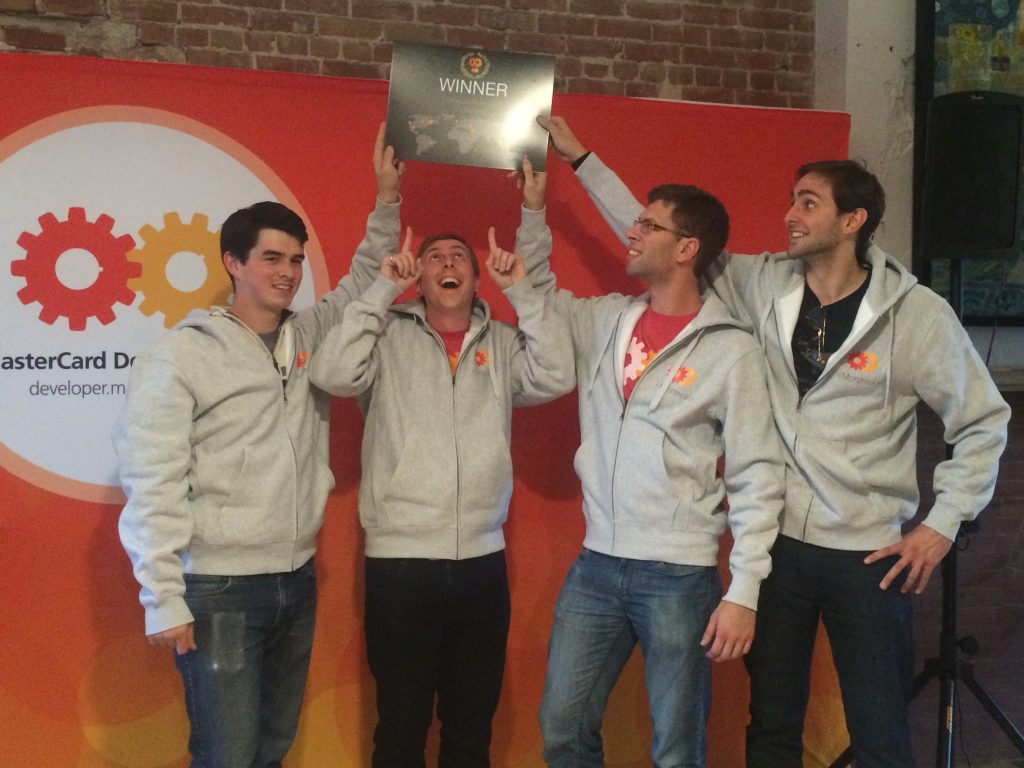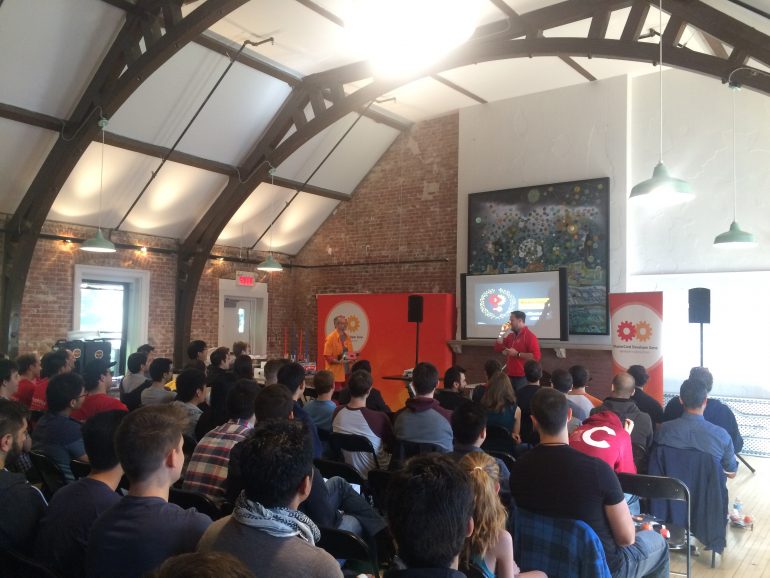Last weekend, approximately 100 designers, developers, and hackers locked themselves into Notman House in beautiful Montreal to build cool things with MasterCard for Masters of Code. We caught up with Nicolas Dinh, VP Mobile Payments at MasterCard Canada, to see how things went, and why it matters to develop for experience first.
What was your experience over the weekend from an organizer’s perspective, as well as just getting in the weeds with the coders?
We started off on Saturday morning with a kickoff from our president, Brian Lang, and one of the key messages he had for the audience was that in general people don’t wake up wanting to make a payment. So the focus for the weekend should be on the experience itself, and that way you can create the best solution or innovation. So that was the initial kickoff that really set the stage.
Because this year we had the ability for coders to register as teams or as individuals, there was an initial developer pitch. So if you were a team, or if you were an individual, you could pitch your idea to the group to look for developers, designers, or vice versa. The previous hackathons we only registered teams with generally pre-conceived ideas, so this was really interesting for us.
So how did that change the dynamic of the weekend? Especially with the kickoff message to focus on experience. Instead of people getting right into coding, was there a lot more conversation off the top, and brainstorming?
The kickoff ended at around 10:30, and initially it was teams coming up and talking about certain ideas, or developers and designers coming up and talking about their skill sets. After that, there was probably a good hour where people were just mingling.
We had an open space at Notman House for our initial presentations, and that space really became a meeting spot where people could intermingle and speak about not only themselves but their ideas. So there were teams that were already kind of constructed and knew their ideas, but there were also teams that were kind of half-baked and still kind of forming that were able to organically go out and add team members and form ideas.
The turnout sounds really good then for that kind of organic pairing to happen.
We weren’t surprised, but we were happy to see a really nice turnout as a result. One thing that didn’t really surprise us, but we were kind of taken aback by the strong participation of a lot of students from the various universities in Montreal. We saw a lot of team members from McGill University, Concordia University, UQAM, so it was a really great way for us to tap into the student developer community by having an event like this in a city that’s home to so may universities, and tap into that creativity.
With a slightly different mandate then, and a younger base of coders hacking, did the hackathon progress differently or did anything stand out as you went around the room? Either in what teams were attacking or just in the way that they worked?
We set up some breakout sessions to go over our MasterCard APIs, and Simplify Commerce, which is a payment API as part of our portfolio of APIs, as well as the Nymi breakout. We saw a lot of people taking advantage of that. The people at AngelHack, who helped us organize this, also had a pitch breakout as well. Really a workshop on the best practices of pitching in a condensed period of time. And there was a high degree of engagement and interest in these breakout sessions, and I think the high level of student participation contributed. For them, this was not only an opportunity to build something great and unique within a condensed period of time, but also a learning experience as well.
So what did you see standing out in the demos as a result of the learning experience?
For me, there were a couple of really unique ideas that resonated. There was one group that created an application called Busy Bee, and it was a financial education application for children. The application essentially pairs up with pre-paid cards that parents can distribute to their kids, and as part of the application, parents can set up goals, and based on that, the children would be rewarded. So it could be something like straight As for a semester gets you $100 on your pre-paid card.
At the same time, the children could set up a wish list of sorts. So they could set up a condition where they say, ‘I will do the dishes for the next four months, and if I do that, you will reward me with a PS4’. So it’s really a tool to, first of all, financially educate kids, as well as a really cool rewards-based system that takes into account pre-paid cards and mobile.
But like you were saying, it’s about the experience first, and then the payment aspect follows.
Exactly.

What did FareShare do to take home the win?
I think what FareShare did was solve a problem or pain point that really all of us have. So if you decide to go on a trip with a bunch of friends, there’s always a bunch of costs that are covered by different friends. At the end of the trip, how do you split all the costs of the amongst your friends?
So what FareShare did was created a very intuitive solution that pulls in all these transactions into an application, based on a grid that allows the friends to very easily share the cost, and then at the end during the tallying, provide instructions as to how much you owe to certain people. And they did it using our MasterCard Send API to send the funds.
So it’s a really simple application that had a very intuitive interface and addresses a pain point we all have.
Looking back now, it’s been about a week since the hackathon. Is there anything that you’re going to take with you from the event going into next year?
Well, we set up a poutine bar, as a surprise midnight snack, and we ended up serving approximately 100 kg of poutine. The goal was to get them through the night with the poutine, but having a heavy meal like that is sometimes detrimental, and after the poutine bar closed shop, I did notice a lot of folks retiring into the dark corners to get a few hours of shuteye.
Oh no! the poutine was too good!
It was delicious – I had two servings of it myself, and was ready to hit the sack after that. We had the best intentions in mind but carb-heavy snacks might not be the right fit.


